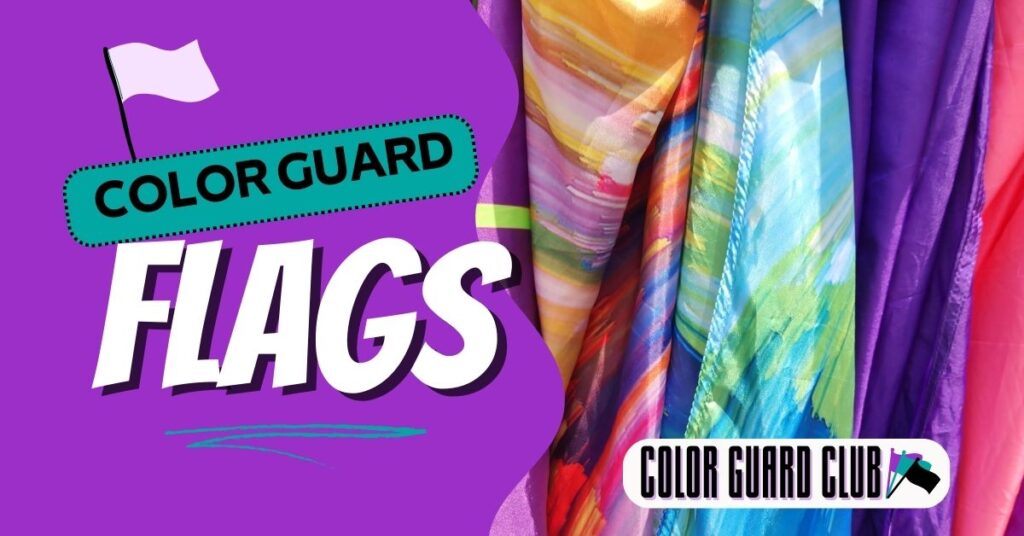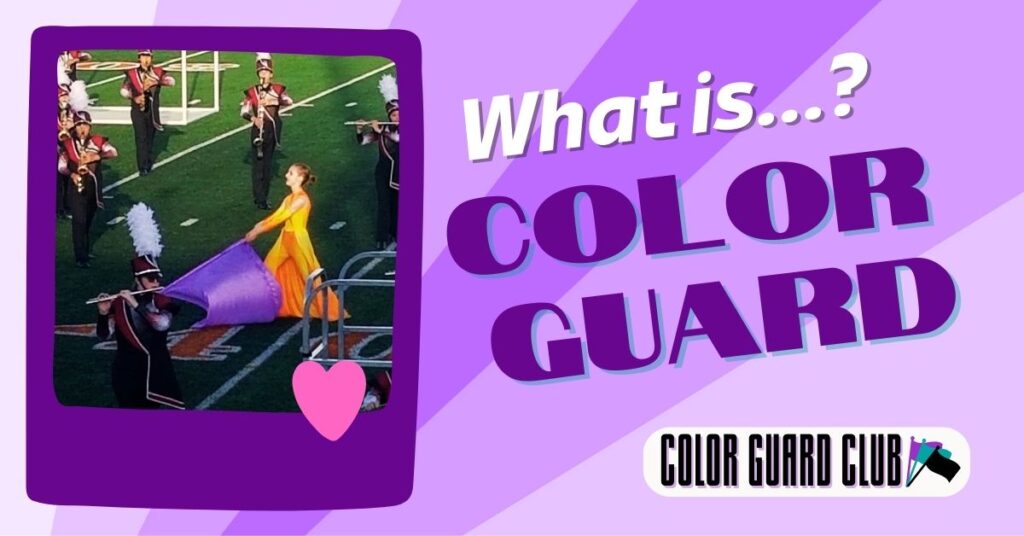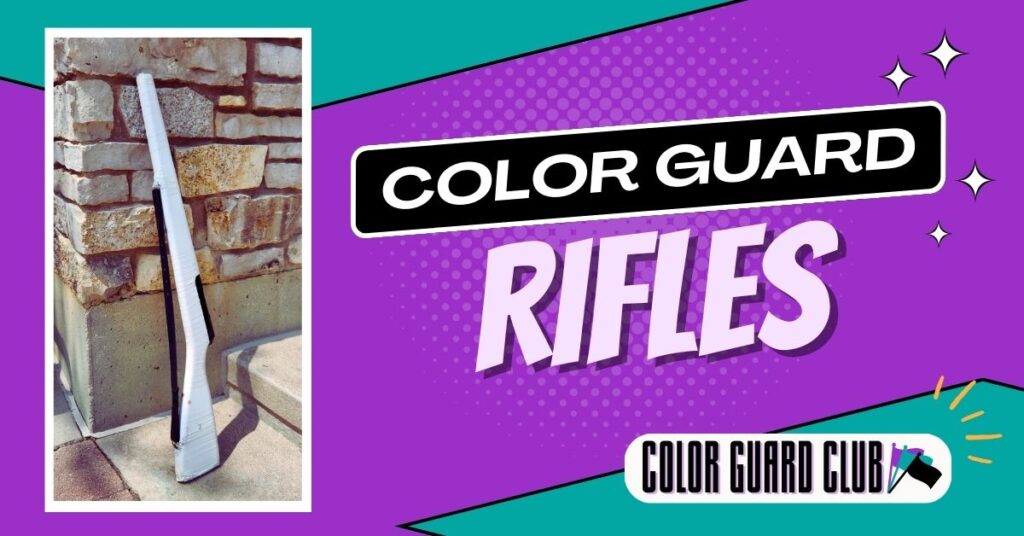So, you chose to join the color guard. Awesome! Here’s a big stick with a flag on it. 😆
Upon entering the world of guard, one of the first pieces of equipment you will learn to spin is the flag. The flag is the most featured equipment in shows, as it’s loved by all skill levels and is what guard’s are known for. The bright colors of the synchronized flags are a crowd favorite.
Parts of a color guard flag
A standard color guard flag is made up of:
- A six-foot pole
- A silk
- Weights
- Crutch tips
- Electrical tape
The weights are just large screws which are put on the ends of the pole, then covered by crutch tips and wrapped securely in electrical tape. The crutch tips are literally just crutch tips: the rubber provides cushion when the flag hits the floor. The pole has a heavier weight at the top, on the silk side, which allows the flag to smoothly spin while being tossed or maneuvered.
The actual flag, called the silk, is also taped to the pole so it doesn’t shift or bunch during a performance. Additional loops of tape are added down the rest of the pole used to mark spots that help guide where you put your hands on the pole. These markings are referred to as “tapes” or “cheaters” in guardie lingo.
You can either buy these materials, or borrow them from your team. The materials that make up a flag seem very random, but they all are very important. Learning how to tape or re-tape flags gets easier over time, and you’ll memorize all of these steps and names as time goes on.
Swing Flags
Besides the standard flag, there’s also the swing flag. They are used for more basic, one-handed motions. The silks are longer on swing flags, and the shorter poles are just PVC piping or chains.



